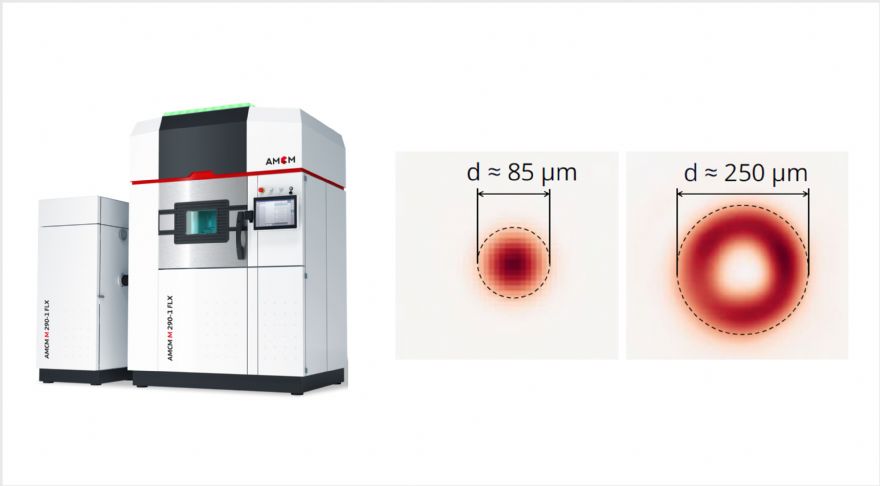 Sintavia
Sintavia, the world's first all-digital aerospace component manufacturer, has announced its commissioning of the first multi-laser industrial 3-D printer in the USA equipped with nLIGHT AFX beam shaping fibre laser systems. The twin 1.2kW lasers on an AMCM M290-2 allow operators to modulate beam spot size and shape without any loss of power and material density. The result is builds that are more productive and less wasteful.
Brian Neff, Sintavia’s founder and CEO, said: “We welcome this new addition to our fleet of 3-D printers. Over the coming years, as we develop and apply this new technology, we expect to be able to print our components at layer thicknesses of 150µm or more without losing any material properties, thus greatly increasing the output of our installed printers. The best part of the nLIGHT system, once it is fully tested, is that it can be retrofitted on other existing EOS and AMCM 3-D printers with minimal new equipment.
“Laser beam shaping systems such as nLIGHT offer a step-function in laser productivity over the Gaussian laser shape that is standard across the powder bed fusion (PBF) additive manufacturing industry today. Beam shaping allows for fully dense material to be melted at a diameter over three times greater than standard laser systems, meaning that standard layer thicknesses of typically 30-45µm currently used by the industry can be doubled or tripled without any loss of material performance. Moreover, because a part can now be printed using fewer layers, less condensate — the metal vapour jet generated during the PBF process — is produced.”
Condensate is the most problematic byproduct of the PBF process, and studies have shown that the use of nLIGHT beam-shaping lasers can reduce this waste stream by up to 70%. Finally, by fully melting thicker build layers without losing density, grain size in the z-direction is increased, resulting in improved material performance — particularly for those applications with high creep requirements.